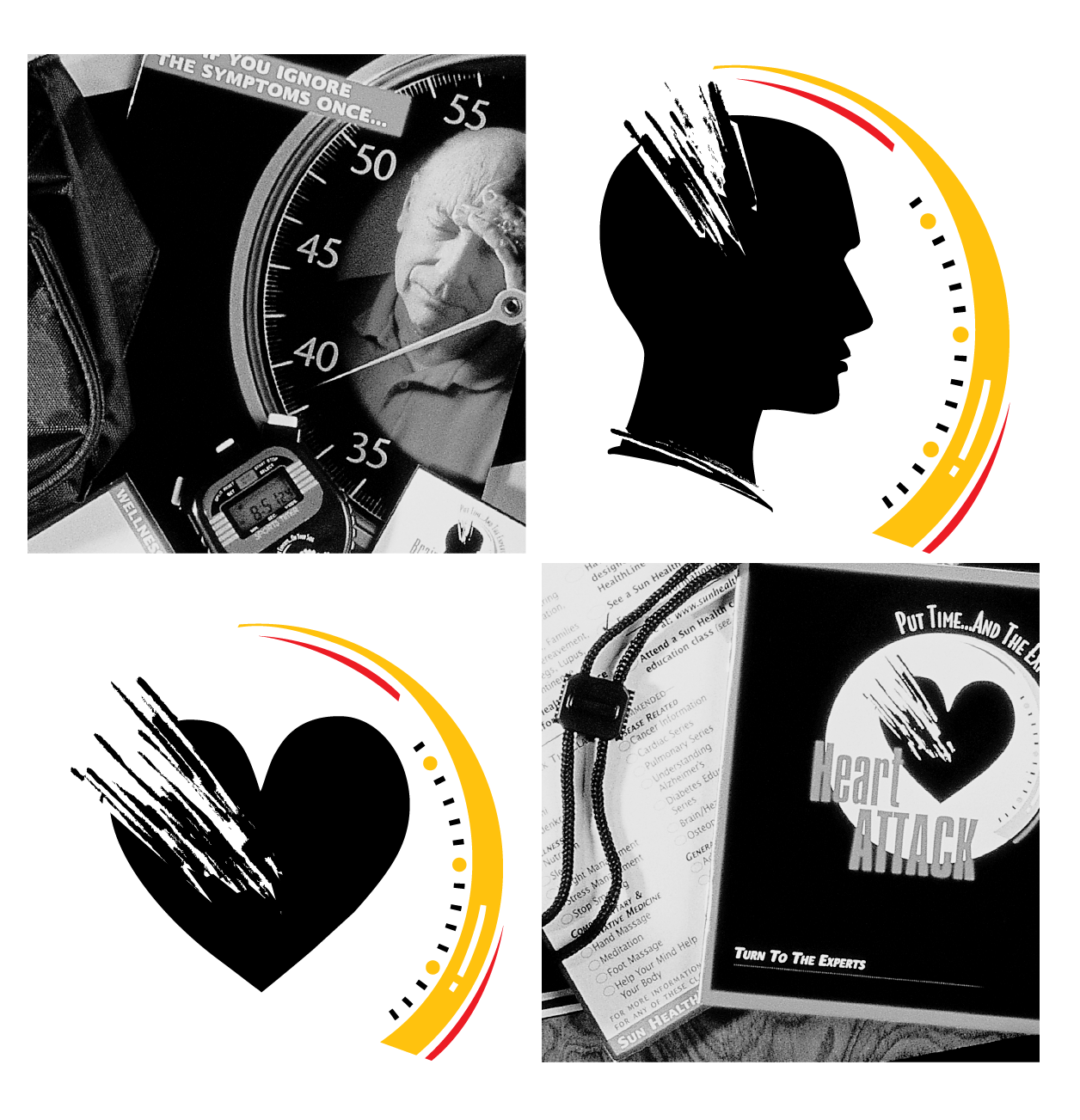
Advertising Case Study
Multi Audience Targeting
Increasing Awareness Among Multiple Audiences
SITUATION
Residents in a large integrated healthcare delivery system’s primary service area (PSA) and secondary service area (SSA) had low awareness and understanding of symptoms and risks for heart attack and stroke (brain attack). Heart attack and stroke cases (as well as cases related to these) had been stagnant or in decline for two years. Finally, a new drug therapy for stroke victims (tpA) had recently been introduced by pharmaceutical manufacturers which provided a newly discovered three-hour window within which permanent damage could be minimized if symptoms were recognized and treated.
GOALS/OBJECTIVES
Goals
- Increase Emergency Department admissions for cardiology and neurology
- Increase hospital inpatient admissions for cardiology and neurology overall
Objectives
- Raise awareness/educate the target audiences about stroke (brain attack) and heart attack and the importance of seeking immediate help (especially in regard to the new drug therapy)
- Distinguish Sun Health as being the Best, the Experts, in treating stroke and heart attack in the PSA/SSA and, in doing so, create a preference for Sun Health
- Increase complete participation in our stroke and cardiac rehab programs
- Minimize outmigration for these services
STRATEGY/TACTICS
The client originally contracted for two separate campaigns. Recognizing the common demographics of the target audiences FabCom recommended a single, combined campaign. A campaign was created which targeted residents aged 50+ in the PSA and SSA, knowing that another important group, adults aged 40 – 50 would also respond to certain media vehicles. A secondary target audience was health care professionals who influence referrals and length of hospital stay: emergency medical technicians, physicians and hospital discharge planners. Building on the basic positioning that had been created for the system as experts, this strategy took the positioning to another level by clearly stating that “We are the Leaders, the Experts, in stroke and heart attack care.”
The elements of this comprehensive campaign included:
- Print and radio advertisements
- Outdoor
- Direct mail package including a risk profile for heart/brain attack
- Brain Attack Classes; Heart Attack Classes; Physician, EMT and Discharge Planner Luncheons and Communications, including local talks by tpA experts
- Brain Attack Web Page

Results
Within three weeks of the launch of the campaign, the Brain Attack Seminars were filled to capacity. More than 80% of direct mail risk profiles returned were from higher risk individuals which were referred internally by system case managers. Patient admissions for heart attack and stroke related disorders had been on a stagnant growth rate averaging .55% per year. During the first year of the campaign these admissions grew by an average of 25.95% (population growth factored out). The campaign generated over three-quarters of a million dollars in net (after all marketing costs) revenue. Combining the originally-planned two campaigns into one saved 40% on implementation costs. The benefits of this relationship strategy continue to grow for the system which continues to utilize FabCom.